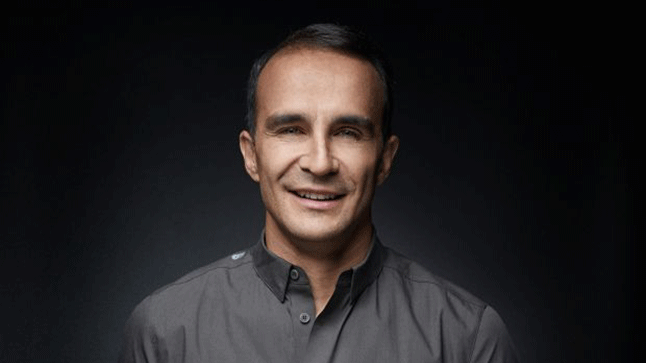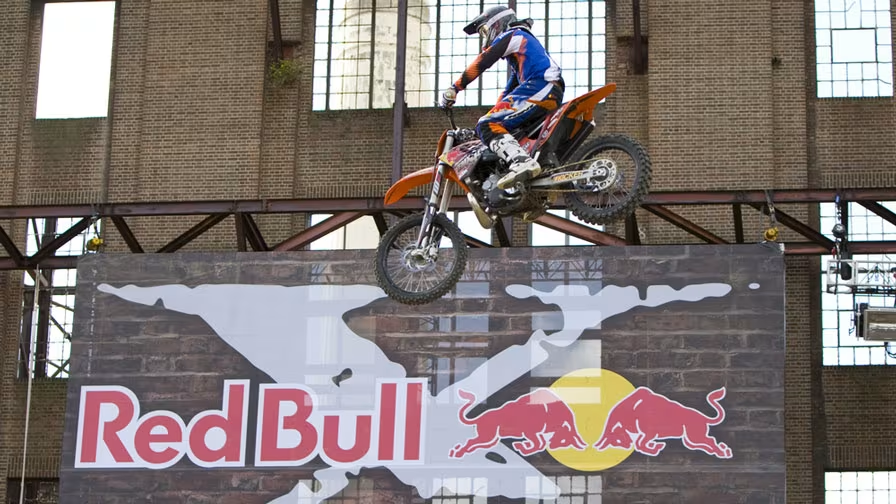
Think at London Business School
Why firms should be experimenting with marketing
Listen as LBS faculty discuss their recent research into how television advertising influences online consumer sales
By London Business School
Find out morePlease enter a keyword and click the arrow to search the site
Or explore one of the areas below
Nader Tavassoli and Ahmet Mercan analyse the move by the leading energy drinks firm onto the catwalk

With the words, “There is no market for Red Bull. But we will create one”, Dietrich Mateschitz launched the energy drinks category in 1987. Red Bull has led it ever since and is now the third most valuable soft drink, behind only Coca-Cola and Pepsi. And it keeps growing, with turnover up 9% in 2023 – backed by a unique marketing approach that accounts for around 30% of revenues.
Red Bull industrialised what some may consider “influencer marketing”. For starters, to induce consumer trials, education teams drove branded cars with a giant Red Bull can mounted on the back, distributing samples to “those in need of energy” at truck stops, office buildings, universities, gyms, and construction sites. And, from the beginning, student marketers promoted the product on campus by providing students with free cases of the drink and encouraging them to throw parties.
Social media is a key communications channel, with more than 30 million views per day across Facebook, TikTok, Instagram and YouTube following athletes in Red Bull gear performing extreme stunts or sharing tricks of the trade. Red Bull regularly encourages the creation and sharing of user-generated content across all its social media channels. This provides it with a vast content library that marketing-weary consumers appreciate as the most authentic form of product promotion, preferring content from their peers to that from paid industry influencers. In service of building the brand image, much of this content is a hair-raising mix of extreme-sports stunts.
Discover fresh perspectives and research insights from LBS
“We make it available and those who love our style come to us ... Red Bull isn’t a drink, it’s a way of life”
Red Bull also sponsors over 800 top athletes – many of them world champions and Olympic medallists – often enabling them to turn niche sports into careers, thus fostering fierce loyalty. It owns multiple sports teams, including F1’s Red Bull Racing and football (soccer) clubs in Europe, the US, and South America. As one example of the exposure this generates, its logo gains high-octane exposure to 400 million eyeballs following F1 on television and the Netflix series ‘Formula 1: Drive to Survive’.
Amateurs, too, are targeted. For example, the Red Bull Backyard Digger helped aspiring BMX bikers build their own course for free. In Mateschitz’ words: “We do not bring the product to the people; we bring people to the product. We make it available and those who love our style come to us ... Red Bull is not a drink; it is a way of life.”
A large proportion of the content on social media is generated organically from events created and supported by Red Bull. These range from extreme windsurfing, ice climbing and cliff diving to soap-box races and Red Bull Flugtag, a weekend of activities attracting crowds of upwards of 30,000 spectators to watch amateurs launch their flying devices into water off a 30-foot ramp. By sponsoring and promoting cultural and extreme-sports events, Red Bull developed a cult following among marketing-wary Millennials, who perceive it as an anti-brand.
Red Bull also creates youth-culture events. For example, the Red Bull Music Academy brings aspiring musicians together with DJs for two weeks to attend workshops and studio sessions; while Red Bull Records, founded in 2007, has had its share of big hits, such as AWOLNATION’s Sail, which went triple platinum and sold 15 million copies worldwide.
To amplify its experiential and influencer-marketing efforts, Red Bull became a fully-fledged media company, creating and distributing original content that typically features extreme human feats. Two million local-language print copies of the brand’s magazine, The Red Bulletin, are distributed monthly in Europe and North America. The company publishes feature films, music, and books, and has its own TV and radio channels.
Red Bull Content Pool makes available, for free, a sizeable portion of its content for editorial use by publishers ranging from MSNBC to ESPN. The content may include the familiar logo on the back of a wingsuit or the side of a skate ramp, but there will be no mention of the actual drink. As one media analyst said, “Nobody is going to go to a website and spend 45 minutes looking at a video about a drink.”
Red Bull’s mission of “Giving wings to people and ideas” guides the company’s nearly 158,000 employees in their decision-making across 175 markets. Its freewheeling culture and the quirky people it attracts have been dubbed “the wiiind behind its wiiings.” Employee reviews on Glassdoor describe the organisation as a fun place to work that “encourages out-of-the-box thinking” and having a “play hard, work hard” culture.
“Getting the brand” is important, no matter the role, and is deeply embedded in the senior management team (the heads of brand, finance, legal and marketing have all been with the company for over 20 years). The company is also organised around communities of interests, such as BMX biking, rap music, surfing, gaming, and auto racing.
“Becoming the official clothing partner of the FIA is a fantastic opportunity for AlphaTauri”

Red Bull has long stretched its brand outside the drinks category, such as with its media companies; Red Bull Mobile in Austria; and sports teams including New York Red Bulls football (soccer) club with its Red Bull Collection-branded merchandise; as well as a limited-edition Athletes Collection of Red Bull-branded apparel and sports gear. In 2004, the company entered F1 racing; Red Bull Racing has since gone on to win the Constructors’ Championship five six (2010-13, 2022-23) and the drivers’ championship six times (2010-13, 2021-23).
Red Bull bought a second F1 team in 2006 to serve as its junior team, rebranding it Scuderia Toro Rosso (“stable of the red bull”). In 2019, this was rebranded Scuderia AlphaTauri to make it a namesake of Red Bull’s emerging fashion brand, launched in 2016. Named after “the brightest, most radiant and energy-rich star in the constellation of Taurus (the bull),” AlphaTauri’s vision is “to constantly challenge what is and elevate what will be”. Its mission is to be “a visionary fashion enterprise that empowers others to be part of our spirit.” Priced in the super-premium to luxury range, the brand is positioned to have a purposeful design to fit consumers’ lifestyles and provide “functionality and innovation without sacrificing style,” while adding value “to both body and mind.” All this came with a bold ambition, as CEO Ahmet Mercan explained: “We are an industry outsider in the fashion industry ... we want to become one of the leading brands in premium fashion.”
Though Scuderia Alpha Tauri was rebranded with Visa as their new sponsor in 2023, the fashion brand continued its motor sport connection by becoming the official clothing sponsor of the Fédération Internationale de L'Automobile (FIA), which not only covers F1 but also various rally and endurance competitions, as well as Formula E. Motor sports provided AlphaTauri with a platform to grow awareness and coherent brand associations. Mercan shared: “Becoming the official clothing partner of the FIA is a fantastic opportunity for AlphaTauri to continue showcasing how innovation and technology can be seamlessly integrated into fashion. with technological innovation.”

AlphaTauri further leveraged its parent by associating itself with Red Bull’s world-class athletes across different sports, gaining endorsements by the F1 world champion Max Verstappen and athletes such as Anri Kawamura, the mogul skier, Tom Bridge, the wake surfer, Evie Richards, the mountain biker, and Tiromana Tupea, the breakdancer. AlphaTauri also dressed the likes of the New York Red Bulls soccer team and is now the official travel-wear partner of FC Red Bull Salzburg. Sports are fast becoming a major sponsorship partner for top fashion brands – from the Premier League, and NBA to the Olympics – but none of the traditional fashion houses have a brand association with the athletes or a core functional focus as authentic as that of AlphaTauri.
"The AlphaTauri way is to fuse fashion with function and innovation without sacrificing the beauty of the product itself"

You said, “No one in the market needs another fashion brand, so our concept is to be a disruptive and innovative company.” What exactly is AlphaTauri disrupting? Red Bull created a new energy drinks category in the minds of the market, one based on a product truth. Our objective at AlphaTauri is to deliver products with a real benefit for the wearer – above and beyond looking great – with innovative features, functions, and longevity. The AlphaTauri way is to fuse fashion with function and innovation without sacrificing the beauty of the product itself.
Unlike traditional premium-fashion brands, this means our creative focus is not only on design, but also on innovative textile technologies and features and, critically, fusing these into a coherent and desirable whole. This is an exciting challenge for the best creative talent out there. While there are other players in the industry with functional benefits – products such as Burberry’s iconic trench coat are functional by definition, for example – AlphaTauri is a new brand trying to define and lead what is an emerging market space. Shaping a new category will take an innovative and convincing approach that may take years before it becomes mainstream.
We are a fashion brand by Red Bull. This means we have a common mindset and share the same DNA. We permanently question the status quo and out-of-the-box thinking is our shared driving source. We do things differently where it makes sense, and we see everything through the lens of innovation. Other synergies we can activate within the global Red Bull Universe are amazing, one-of-a- kind assets.
Thanks to our mother enterprise, from the very beginning we have had a huge community of “Friends of the Brand” and access to the existing infrastructures in new countries to support our expansion. We can also learn from the unique marketing approach of our mothership. This does not mean copying it; it means applying a common disruptor mindset in all we do. Disruption goes beyond an innovative product. Playing the game like a traditional fashion house would not only fail to make us stand out, it would undermine the unique brand we are building. So, watch this space – we are just getting started!

Dr Nader Tavassoli is Professor of Marketing at London Business School
Further reading: Red Bull Spreads its Wiings

Think at London Business School
Listen as LBS faculty discuss their recent research into how television advertising influences online consumer sales
By London Business School
Find out more

Think at London Business School
Dafna Goor and Katie Pisa discuss why some consumers experience impostor syndrome
By Dafna Goor
Find out more